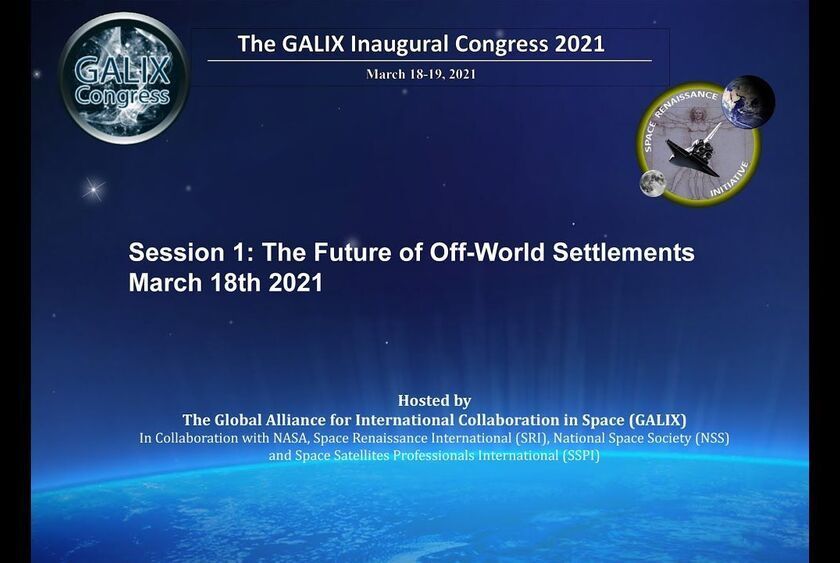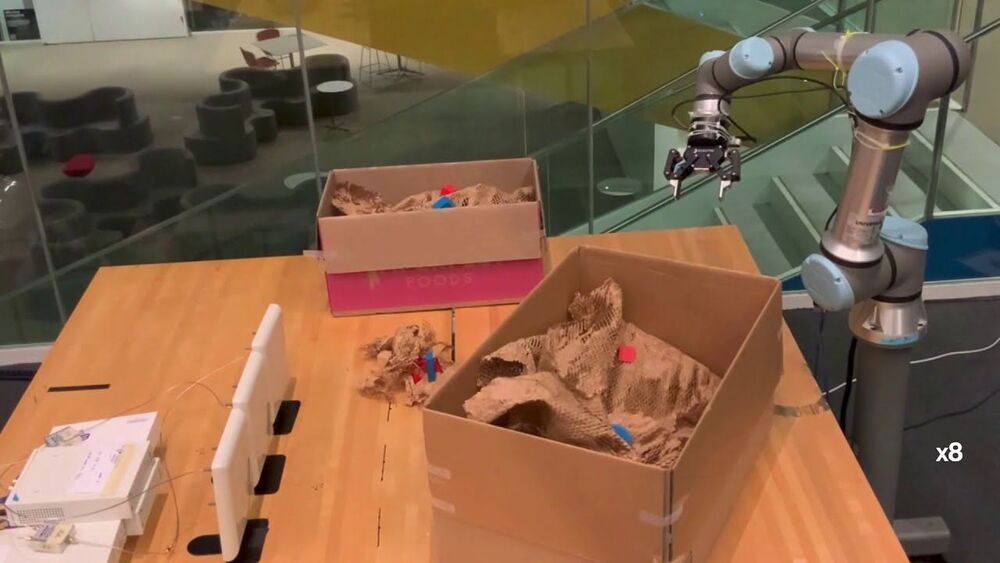# **The SRIC3 Program is now online!**
Space Renaissance just published the Program of the SRIC3 World Congress The Civilian Space Development\.

# **The SRIC3 Program is now online!**
Space Renaissance just published the Program of the SRIC3 World Congress The Civilian Space Development\.
About 10 years ago, researchers at the University of Bonn produced an extreme aggregate photon state, a single “super-photon” made up of many thousands of individual light particles, and presented a completely new light source. The state is called an optical Bose-Einstein condensate and has captivated many physicists ever since, because this exotic world of light particles is home to its very own physical phenomena. Researchers led by Prof. Dr. Martin Weitz, who discovered the super photon, and theoretical physicist Prof. Dr. Johann Kroha now report a new observation: a so-called overdamped phase, a previously unknown phase transition within the optical Bose-Einstein condensate. The study has been published in the journal Science.
The Bose-Einstein condensate is an extreme physical state that usually only occurs at very low temperatures. The particles in this system are no longer distinguishable and are predominantly in the same quantum mechanical state; in other words, they behave like a single giant “superparticle.” The state can therefore be described by a single wave function.
In 2010, researchers led by Martin Weitz succeeded for the first time in creating a Bose-Einstein condensate from light particles (photons). Their special system is still in use today: Physicists trap light particles in a resonator made of two curved mirrors spaced just over a micrometer apart that reflect a rapidly reciprocating beam of light. The space is filled with a liquid dye solution, which serves to cool down the photons. The dye molecules “swallow” the photons and then spit them out again, which brings the light particles to the temperature of the dye solution—equivalent to room temperature. The system makes it possible to cool light particles because their natural characteristic is to dissolve when cooled.
Bipolar disorder affects millions of Americans, causing dramatic swings in mood and, in some people, additional effects such as memory problems.
While bipolar disorder is linked to many genes, each one making small contributions to the disease, scientists don’t know just how those genes ultimately give rise to the disorder’s effects.
However, in new research, scientists at the University of Wisconsin-Madison have found for the first time that disruptions to a particular protein called Akt can lead to the brain changes characteristic of bipolar disorder. The results offer a foundation for research into treating the often-overlooked cognitive impairments of bipolar disorder, such as memory loss, and add to a growing understanding of how the biochemistry of the brain affects health and disease.
A new, detailed model of the surface of the SARS-CoV-2 spike protein reveals previously unknown vulnerabilities that could inform development of vaccines. Mateusz Sikora of the Max Planck Institute of Biophysics in Frankfurt, Germany, and colleagues present these findings in the open-access journal PLOS Computational Biology.
SARS-CoV-2 is the virus responsible for the COVID-19 pandemic. A key feature of SARS-CoV-2 is its spike protein, which extends from its surface and enables it to target and infect human cells. Extensive research has resulted in detailed static models of the spike protein, but these models do not capture the flexibility of the spike protein itself nor the movements of protective glycans—chains of sugar molecules—that coat it.
To support vaccine development, Sikora and colleagues aimed to identify novel potential target sites on the surface of the spike protein. To do so, they developed molecular dynamics simulations that capture the complete structure of the spike protein and its motions in a realistic environment.

Great new episode with Michael Seiffert, the NASA project scientist for the U.S. contribution to the European Space Agency’s Euclid spacecraft. Seiffert talks candidly about what it takes to strike a balance between risk and reward in the design of this upcoming $1 billion dollar dark energy mission.
Fascinating new chat with Michael Seiffert, the NASA project scientist for the U.S. contribution to the European Space Agency’s Euclid spacecraft. Due for launch in the second half of 2022, we discuss how this new space telescope will help astronomers finally understand the mystery of dark energy and maybe even dark matter.
Continue reading “Episode 44 --- ESA’s Upcoming Euclid Dark Energy Survey” »
With an internal global ocean twice the size of Earth’s oceans combined, Jupiter’s moon Europa carries the potential for conditions suitable for life. But the frigid temperatures and the nonstop pummeling of the surface from Jupiter’s radiation make it a tricky target to explore: Mission engineers and scientists must design a spacecraft hardy enough to withstand the radiation yet sensitive enough to gather the science needed to investigate Europa’s environment.
The Europa Clipper orbiter will swoop around Jupiter on an elliptical path, dipping close to the moon on each flyby to conduct detailed reconnaissance. The science includes gathering measurements of the internal ocean, mapping the surface composition and its geology, and hunting for plumes of water vapor that may be venting from the icy crust.
Applied Materials CEO Gary Dickerson’s formula for success isn’t magic. “Being close to the customer,” he said, is the lesson that’s guided him.

In recent years, robots have gained artificial vision, touch, and even smell. “Researchers have been giving robots human-like perception,” says MIT Associate Professor Fadel Adib. In a new paper, Adib’s team is pushing the technology a step further. “We’re trying to give robots superhuman perception,” he says.
The researchers have developed a robot that uses radio waves, which can pass through walls, to sense occluded objects. The robot, called RF-Grasp, combines this powerful sensing with more traditional computer vision to locate and grasp items that might otherwise be blocked from view. The advance could one day streamline e-commerce fulfillment in warehouses or help a machine pluck a screwdriver from a jumbled toolkit.
The researchers let the cell clusters assemble in the right proportions and then used micro-manipulation tools to move or eliminate cells — essentially poking and carving them into shapes like those recommended by the algorithm. The resulting cell clusters showed the predicted ability to move over a surface in a nonrandom way.
The team dubbed these structures xenobots. While the prefix was derived from the Latin name of the African clawed frogs (Xenopus laevis) that supplied the cells, it also seemed fitting because of its relation to xenos, the ancient Greek for “strange.” These were indeed strange living robots: tiny masterpieces of cell craft fashioned by human design. And they hinted at how cells might be persuaded to develop new collective goals and assume shapes totally unlike those that normally develop from an embryo.
But that only scratched the surface of the problem for Levin, who wanted to know what might happen if embryonic frog cells were “liberated” from the constraints of both an embryonic body and researchers’ manipulations. “If we give them the opportunity to re-envision multicellularity,” Levin said, then his question was, “What is it that they will build?”
WASHINGTON — NASA’s OSIRIS-REx spacecraft will make one final close approach to the asteroid it collected samples from next week before heading back to Earth.
On April 7, the spacecraft will pass 3.7 kilometers above the location on the asteroid Bennu called Nightingale where, in October, the spacecraft briefly touched down and collected as much as several hundred grams of material, now stored in the spacecraft.
Immediately after that sample collection maneuver, the mission had no plans to return to the vicinity of Bennu. However, NASA decided to make a final pass over the touchdown site to see what changes the sampling made to the Nightingale region, like the creation of a crater.
